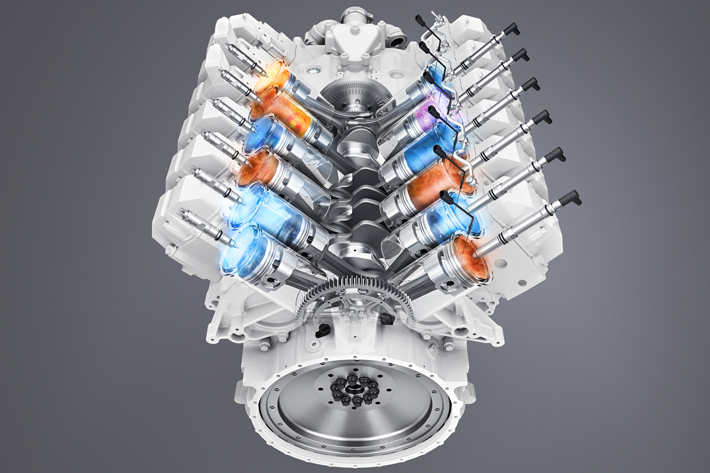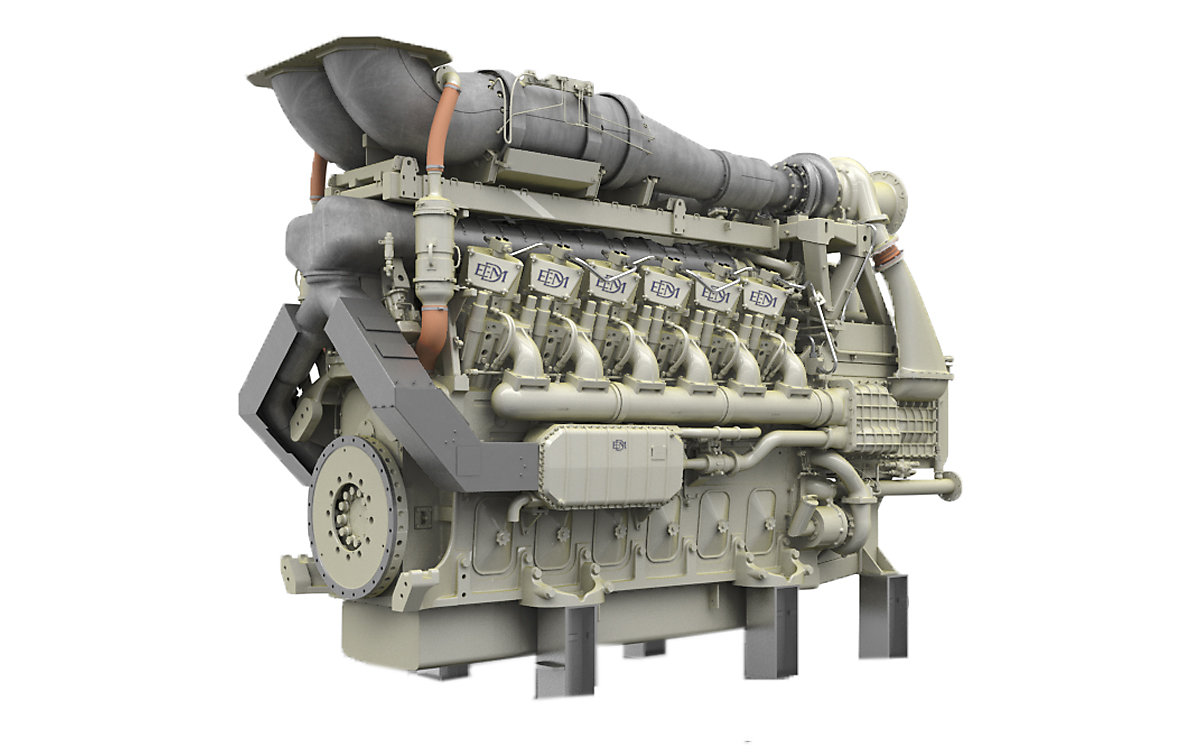The Advancement of High-Performance Automotive Powerplants: A Comprehensive Review of Cutting-Edge Engine Technologies in the Modern Automotive Sector
The mission for more reliable, powerful, and eco mindful engines has actually led to a myriad of developments that have actually reshaped the means we believe concerning auto power. From turbocharging advancements to the smooth integration of crossbreed powertrains, the realm of high-performance engine technologies proceeds to press limits and redefine opportunities.
Turbocharging Advancements
The development of high-performance automotive powerplants has been significantly influenced by continual advancements in turbocharging advancements. Turbocharging has actually revolutionized the vehicle sector by offering a much more reliable means of boosting engine power result without considerably boosting engine variation. By utilizing exhaust gases to drive a generator that compresses the incoming air right into the engine, turbochargers properly increase the air-fuel mix's thickness, resulting in improved combustion and higher horse power degrees.
Among the vital improvements in turbocharging modern technology is the growth of variable geometry turbos (VGTs) or variable nozzle turbines (VNTs) These systems permit a lot more specific control over boost levels, decreasing turbo lag and enhancing engine action throughout a bigger array of RPMs. Additionally, twin-scroll turbochargers have become preferred in high-performance applications as a result of their capability to different exhaust pulses for far better power use.
Crossbreed Powertrain Assimilation
Proceeding the trajectory of technological advancements in automobile powerplants, the combination of hybrid powertrains marks a significant change in the direction of improving both effectiveness and efficiency in contemporary cars. Hybrid powertrains incorporate typical inner combustion engines with electric motors, enabling enhanced fuel economy, lowered exhausts, and boosted power output (engines for africa). By seamlessly blending the strengths of both power sources, crossbreeds provide a versatile remedy that deals with varying driving problems and needs
One key benefit of hybrid powertrain integration is the capacity to recapture power throughout coasting or braking, keeping it in the car's battery for later use. This regenerative stopping attribute not only enhances performance yet additionally adds to extending the general variety of the car. In addition, the instantaneous torque distribution of electric motors complements the power distribution of inner burning engines, resulting in enhanced velocity and responsiveness.
Automakers are continuously improving crossbreed powertrain technologies, intending to strike an equilibrium between performance and sustainability. engines for africa. As customer need for eco-friendly yet effective lorries grows, the combination of crossbreed powertrains is positioned to play a pivotal role fit the future of vehicle propulsion systems

Advanced Gas Injection Solutions
With improvements in vehicle modern technology, the execution of innovative gas shot systems has actually changed the performance and efficiency of modern-day lorries. These sophisticated gas distribution systems have actually replaced conventional carburetors due to their exceptional precision in delivering gas to the engine. Straight fuel injection, where fuel is splashed straight into the combustion chamber, enables for much better control over fuel-air mix, resulting in improved power result and gas effectiveness.
One of the key advantages of sophisticated fuel injection systems is their capacity to adjust to varying motoring problems in real-time. This flexibility makes certain ideal engine performance across find this various circumstances, whether it be during aggressive velocity or cruising at a constant rate. Furthermore, modern gas injectors are created to atomize fuel extra successfully, promoting cleaner burning and decreasing harmful emissions.
Furthermore, progressed fuel shot systems play an important role in making it possible for the application of other cutting-edge engine innovations, such as turbocharging and variable valve timing, additional enhancing the general power and efficiency of high-performance auto powerplants.
Performance-Enhancing Electronics

One key innovation that exemplifies this is the Electronic Control System (ECU), which offers as the mind of the engine administration system. The ECU procedures real-time information from different sensing units to specifically regulate ignition timing, gas shot, and various other essential parameters, resulting in enhanced power shipment and fuel efficiency. Additionally, technologies like variable valve timing (VVT) and electronic throttle control (AND SO ON) more add to making the most of engine efficiency by readjusting shutoff opening times and throttle feedbacks based upon driving conditions.
Additionally, performance-enhancing electronics enable attributes such as launch control, grip control, and adaptive suspension systems, enhancing both the driving experience and overall vehicle efficiency. The constant development and integration of these innovative digital systems continue to push the borders of vehicle engineering, resulting in more effective, effective, and technologically progressed high-performance automobiles.
Future Trends in Engine Development
As auto powerplants advance with the integration of performance-enhancing electronic devices, the trajectory of engine advancement is poised to welcome future trends that will certainly redefine the landscape of high-performance automobiles. One prominent fad on the horizon is the ongoing downsizing of engines without visit homepage endangering power output. This downsizing is attained with modern technologies like turbocharging and electrification, allowing smaller engines to provide the performance of bigger ones while improving gas efficiency.
One more key pattern is the increasing fostering of crossbreed powertrains in high-performance automobiles. Crossbreed systems integrate inner burning engines with electrical motors to enhance velocity and total performance while lowering emissions. In addition, developments in products scientific research are driving the advancement of lighter and more powerful engine elements, adding to improved effectiveness and power-to-weight proportions.
Moreover, the market is relocating in the direction of more lasting techniques, with a growing focus on alternative fuels such as biofuels, hydrogen, and artificial gas. These environment-friendly choices not only decrease the ecological influence of high-performance vehicles but also provide chances for more boosting engine performance. In general, the future of engine advancement in the auto sector is characterized by development, performance, and sustainability.
Conclusion
To conclude, the auto industry has seen significant improvements in high-performance engine modern technologies, consisting of turbocharging advancements, crossbreed powertrain combination, advanced fuel injection systems, and performance-enhancing electronics. These growths have actually reinvented the abilities of contemporary powerplants, resulting in improved efficiency, power result, and total efficiency of cars. As innovation continues to develop, future trends in engine growth are anticipated to better improve the performance and sustainability of automotive powerplants.
Turbocharging has actually reinvented the automobile sector by offering a more reliable ways of enhancing engine power result without dramatically boosting engine displacement.As auto powerplants development with Check Out Your URL the combination of performance-enhancing electronic devices, the trajectory of engine development is poised to welcome future trends that will certainly redefine the landscape of high-performance automobiles. Overall, the future of engine growth in the automobile sector is defined by development, sustainability, and efficiency.
In verdict, the automotive sector has seen significant developments in high-performance engine technologies, consisting of turbocharging advancements, hybrid powertrain assimilation, progressed fuel shot systems, and performance-enhancing electronics. As innovation proceeds to evolve, future patterns in engine growth are expected to even more improve the performance and sustainability of automotive powerplants.